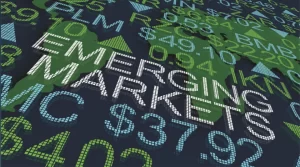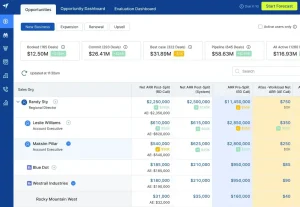
Environment Earth Day Concept.Crystal Earth with a medical doctor's stethoscope on green.Saving environment, and environmentally sustainable. Save Earth. Global healthcare and Green Earth Day. ESG
Let’s be honest. The weather isn’t just small talk anymore. It’s a financial conversation. From the wildfire smoke that cancels your vacation to the flood that ruins a basement, climate change is no longer a distant threat—it’s a variable in our monthly budget. It’s the new normal, and honestly, our wallets need to catch up.
This isn’t about fear. It’s about foresight. Preparing your finances for climate-related shifts is like building a levee before the storm. It’s practical, it’s powerful, and it brings a sense of control back to the table. So, let’s dive into how you can future-proof your money against a changing world.
The New Cost of Living: It’s More Than Just Your Utility Bill
Sure, we all notice when the air conditioning runs non-stop during a heatwave. But the financial ripple effects go much, much deeper. Think about it. Food prices can spike after a drought withers crops in the Midwest. Home insurance is becoming a genuine headache—and a major expense—in places like Florida and California. And what about the value of your home if it’s suddenly in a newly designated flood zone?
These aren’t hypotheticals. They are the emerging realities of the climate-adjusted cost of living. Your financial plan needs to account for this new layer of volatility.
Your Home: The First Line of Defense
For most of us, our home is our largest asset. It’s also, you know, ground zero for climate risk. Protecting it is job one.
Start with a brutally honest assessment. Don’t just rely on old flood maps. Look at current data on wildfire risk, coastal erosion, and even inland flooding. This isn’t about scaring yourself; it’s about seeing clearly.
Next, get familiar with your insurance policy. I mean, really read it. What’s the deductible for a hurricane? Does it cover “mudflow” or just “flooding”? The devil is in the details, and finding out you’re underinsured after a disaster is a financial nightmare.
Consider these proactive steps:
- Fortify Your Property: Invest in storm shutters, upgrade to a fire-resistant roof, or install a sump pump. These aren’t just home improvements; they’re financial safeguards that can lower insurance premiums.
- Review Insurance Annually: Make it a ritual, like checking your credit report. Ensure your coverage keeps pace with rebuilding costs and new risks.
- Understand the FAIR Plan: In high-risk states, you might need to look into your state’s insurer of last resort. It’s more expensive, but it’s a backstop.
Building a Climate-Proof Budget
Budgeting for climate change sounds futuristic, but it’s really just about adding a new category to your old spreadsheet. You need a buffer for the unexpected.
First, your emergency fund. The old rule of thumb was three to six months of expenses. In an era of climate disruption? Aim for six to nine. Seriously. A robust emergency fund is your single best tool for weathering a job loss or a major home repair after a severe storm.
Second, think about your transportation and energy costs. As gas prices swing and power grids get stressed, the financial case for an electric vehicle or solar panels gets stronger. The upfront cost is high, but the long-term insulation from volatile energy markets is a powerful financial move. Look into federal and state tax credits—they can make a huge difference.
| Budget Category | Climate Consideration |
| Housing | Higher insurance premiums, potential maintenance/fortification costs. |
| Transportation | Fuel price volatility, potential for EV transition. |
| Food | Price increases due to supply chain disruptions from extreme weather. |
| Utilities | Higher cooling/heating costs, potential for backup power solutions. |
Investing for a Resilient Future
Your investment portfolio isn’t immune. Fossil fuel companies face massive transition risks. Coastal real estate investments might be riskier than they appear. Conversely, the global shift to a green economy is creating massive opportunities.
This is where ESG (Environmental, Social, and Governance) investing and other sustainable strategies come in. It’s not just about feeling good; it’s about risk management and identifying growth sectors. Think renewable energy, water infrastructure, and sustainable agriculture.
Talk to a financial advisor about “climate-aware” investing. Aligning your money with your future isn’t just ethical—it might just be smarter.
The Big Picture: Relocation and Career Shifts
For some, the most significant financial decision will be where to live. “Climate migration” is already happening. People are moving away from areas with extreme heat, repeated wildfires, or sea-level rise.
If you’re considering a move, factor in:
- Long-Term Property Value: Is the area you’re moving to projected to be stable? What about the one you’re leaving?
- Cost of Living Adjustments: A new city might have different taxes, insurance landscapes, and utility costs.
- Job Market: Is the local economy resilient? Are there opportunities in your field?
And your career? Well, the green transition is creating entirely new industries. Careers in solar installation, climate risk analysis, water conservation, and sustainable design are booming. Upskilling for the new economy is one of the most potent forms of financial preparation you can undertake.
It’s Not Doom. It’s Data.
Look, this can feel overwhelming. But the goal isn’t to build a bunker. It’s to build resilience. It’s about swapping anxiety for action. By taking these steps—fortifying your home, bulking up your savings, and aligning your investments—you’re not just preparing for the worst. You’re positioning yourself to thrive in a world that is, without a doubt, changing.
The most valuable asset you have isn’t your house or your stock portfolio. It’s your adaptability. And that, it turns out, is priceless.







